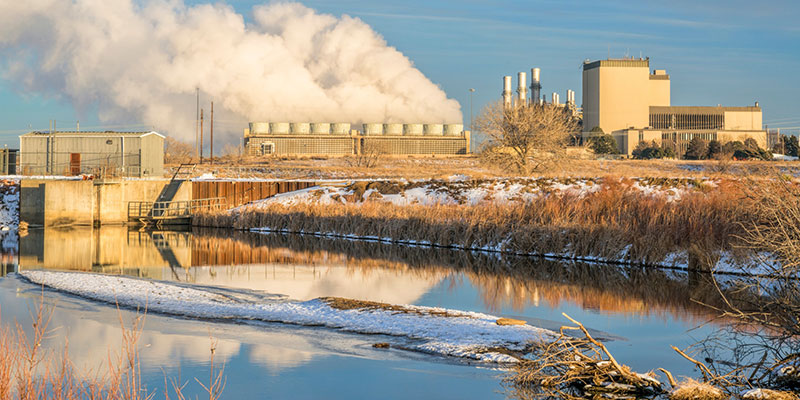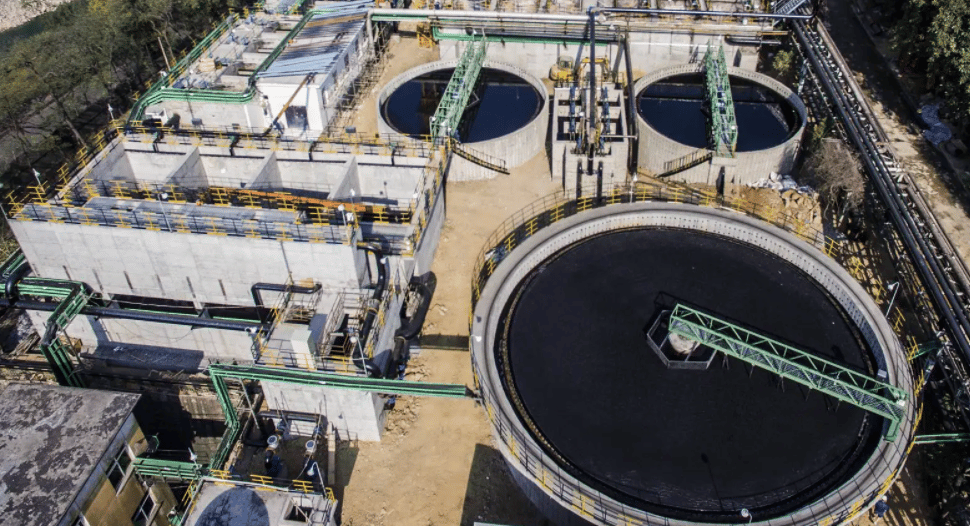Industrial Waste Water Treatment-- Reliable Waste Management for Factories
Industrial Waste Water Treatment-- Reliable Waste Management for Factories
Blog Article
Trick Methods in Industrial Waste Water Therapy Processes
The treatment of industrial wastewater is a vital aspect of ecological management, involving a range of techniques created to reduce the impact of pollutants. Advancements in innovations such as membrane layer filtration and advanced oxidation processes supply cutting-edge options for enhancing treatment efficacy.
Physical Treatment Approaches
Exactly how successfully can physical therapy approaches deal with the complexities of industrial wastewater? Physical therapy approaches play a pivotal function in the preliminary phases of wastewater monitoring, concentrating primarily on the elimination of solids and big particulates. Strategies such as sedimentation, flotation, and purification are important for reducing the concentration of suspended solids, thereby enhancing the effectiveness of succeeding therapy procedures.
Sedimentation entails the gravitational settling of solids, permitting for the separation of heavier products from the wastewater. This technique is specifically reliable in making clear water prior to biological or chemical treatments.
Furthermore, flotation techniques, which use air bubbles to lift put on hold solids to the surface for elimination, are efficient in dealing with wastewater with high concentrations of fats, oils, and oils. Overall, physical treatment techniques serve as an essential very first step in the detailed administration of industrial wastewater, guaranteeing that the lots on subsequent treatment stages is reduced and boosting total therapy efficiency.
Chemical Treatment Strategies
While physical treatment techniques lay the foundation for effective wastewater monitoring, chemical therapy techniques are necessary for dealing with the a lot more complicated impurities usually discovered in commercial effluents. These methods utilize different chemical representatives to precipitate, neutralize, or oxidize damaging substances, making certain an extra comprehensive elimination of toxins.
One usual strategy is coagulation and flocculation, where chemical coagulants such as aluminum sulfate or ferric chloride are included in promote the aggregation of suspended fragments. This process boosts solid-liquid splitting up, decreasing turbidity and boosting water high quality. Additionally, neutralization processes are utilized to change the pH of wastewater, using acids or bases to neutralize acidic or alkaline streams, specifically.
Oxidation-reduction responses play an important function in degrading natural impurities and microorganisms. Chemical oxidants like chlorine, hydrogen, or ozone peroxide are used to break down intricate natural substances, making them much less damaging or extra biodegradable. Advanced oxidation procedures (AOPs) incorporate multiple oxidation methods to boost pollutant removal efficiency.
Organic Treatment Procedures
The performance of wastewater therapy is significantly improved by biological therapy processes, which harness the natural metabolic activities of microbes to break down raw material and get rid of toxins. Industrial Waste Water Treatment. These procedures mainly entail cardiovascular and anaerobic digestion, each tailored for certain kinds of wastewater
Aerobic therapy procedures utilize oxygen to sustain microbial growth, advertising the breakdown of organic toxins right into co2 and water. Typical approaches include activated sludge systems, where oygenation tanks help with the blending of wastewater with microbes, and flowing filters, which encourage biofilm advancement on media surfaces.
Conversely, anaerobic therapy processes take place linked here in the lack of oxygen, using anaerobic bacteria to disintegrate raw material, resulting in biogas production, a renewable energy source. Anaerobic digesters are frequently used in industrial settings for this objective, successfully reducing the quantity of sludge while creating beneficial biogas.
The selection of an organic therapy technique depends on wastewater qualities, therapy objectives, and regulatory criteria. The integration of organic processes in wastewater therapy not only boosts pollutant elimination efficiency however also promotes sustainability by reducing chemical usage and sustaining resource recuperation.
Advanced Oxidation Processes

Usual AOP methods consist of Fenton's ozonation, photocatalysis, and reagent. Fenton's reagent, a mix of hydrogen peroxide and ferrous iron, militarizes the formation of hydroxyl radicals, making it effective for dealing with wastewater containing phenolic substances and various other stubborn compounds. Ozonation makes use of ozone as a powerful oxidant, efficient in weakening a variety of organic pollutants while all at once sanitizing the effluent. Photocatalysis uses light-activated catalysts, such as titanium dioxide, to enhance oxidation responses and eliminate pollutants.
AOPs supply numerous advantages, including reduced sludge production and the capability to deal with wastewater with high concentrations of organic pollutants. Nevertheless, the execution of AOPs requires mindful factor to consider of functional parameters and cost-effectiveness, ensuring that these advanced methods are properly incorporated right into existing wastewater therapy systems.
Membrane Layer Filtration Technologies

Microfiltration is efficient for eliminating put on hold germs and solids, while ultrafiltration targets smaller natural particles and infections. Nanofiltration links the void in between ultrafiltration and reverse osmosis, successfully eliminating organic compounds and divalent ions. Reverse osmosis offers the highest degree of filtration, utilized mainly for desalination and eliminating mono-valent ions.
Membrane layer innovations supply check over here numerous benefits, consisting of reduced power intake compared to standard therapy methods, modular style for scalability, and the potential for water recuperation and reuse. Challenges such as membrane fouling and the need for routine upkeep should be addressed to guarantee system effectiveness. Overall, membrane layer purification modern technologies represent an important part of modern commercial wastewater therapy methods, promoting sustainability and source conservation in water management.
Verdict
In final thought, industrial wastewater treatment employs a diverse variety of strategies, including physical, chemical, biological, and advanced techniques. Continued advancements in these methodologies will certainly even more enhance the effectiveness and efficiency of wastewater additional hints treatment procedures in commercial settings.
The therapy of commercial wastewater is an essential element of environmental monitoring, including a range of methods made to mitigate the effect of contaminants.Just how effectively can physical treatment approaches attend to the intricacies of commercial wastewater?Advanced oxidation processes (AOPs) represent an advanced technique in industrial wastewater therapy, developed to efficiently deteriorate natural toxins that are frequently resistant to conventional therapy methods (Industrial Waste Water Treatment).In conclusion, commercial wastewater therapy utilizes a varied selection of methods, including physical, chemical, biological, and advanced techniques. Continued innovations in these techniques will even more boost the effectiveness and effectiveness of wastewater treatment processes in industrial setups
Report this page